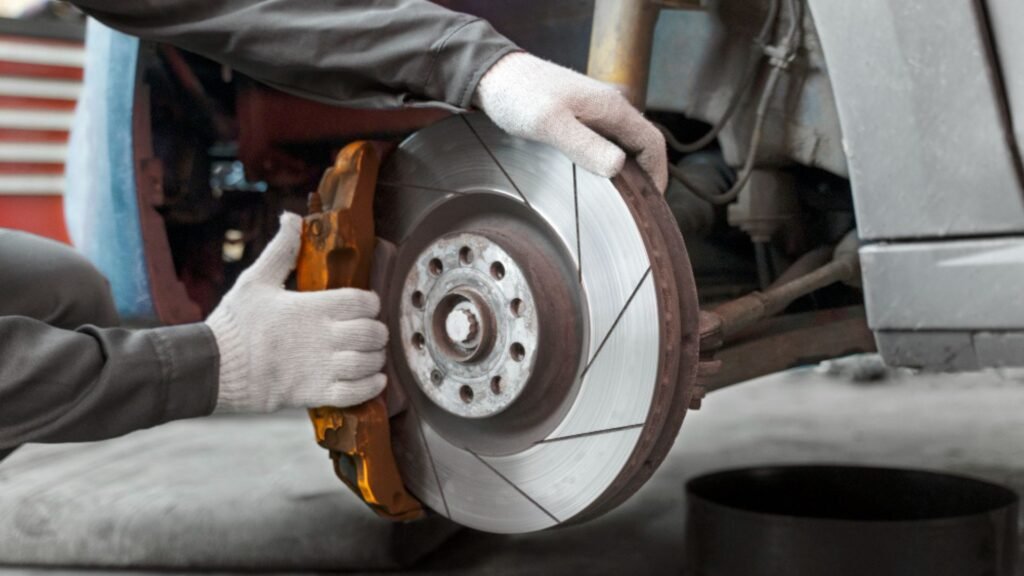Brake systems are a fundamental aspect of vehicle safety and performance. As technology evolves, so does brake technology, leading to significant innovations that enhance safety, efficiency, and driving experience. In this article, we explore some of the cutting-edge advancements in modern brake systems that are shaping the future of automotive engineering.

Advanced Braking Technologies
Electronic Braking Systems (EBS)
Precision and Control: Electronic Braking Systems use electronic sensors and actuators to manage braking forces more precisely than traditional hydraulic systems. EBS improves braking responsiveness and stability, providing a smoother and more controlled driving experience. It also integrates with other vehicle systems, enhancing overall performance.
Regenerative Braking
Energy Recovery: Regenerative braking captures and converts the kinetic energy generated during braking into electrical energy, which is then stored in the vehicle’s battery. This technology is particularly popular in electric and hybrid vehicles, as it improves energy efficiency and extends driving range. Regenerative braking not only enhances fuel efficiency but also reduces wear on traditional brake components.
Brake-by-Wire Systems
Electronic Control: Brake-by-Wire technology replaces mechanical and hydraulic brake systems with electronic controls. This system allows for more precise and customizable braking performance, reduces the weight and complexity of braking components, and integrates seamlessly with advanced driver assistance systems (ADAS). Brake-by-Wire systems are pivotal in the development of autonomous and semi-autonomous vehicles.
Enhanced Safety Features
Autonomous Emergency Braking (AEB)
Collision Avoidance: Autonomous Emergency Braking systems use sensors and cameras to detect potential collisions. If the system determines that a collision is imminent, it automatically applies the brakes to prevent or mitigate the impact. AEB significantly enhances safety by reducing the likelihood of accidents and improving overall road safety.
Adaptive Braking Systems
Dynamic Adjustment: Adaptive braking systems adjust braking force based on driving conditions, load, and speed. For example, these systems can increase braking force on slippery surfaces or reduce it during downhill driving. By dynamically adjusting braking performance, adaptive systems enhance vehicle stability and control.
Enhanced Brake Cooling Systems
Managing Heat: Advanced brake cooling systems manage the heat generated during heavy braking, preventing brake fade and maintaining consistent performance. Improved cooling mechanisms, such as ventilated rotors and advanced cooling ducts, ensure that the brakes remain effective under high-stress conditions.
Integration with Modern Vehicle Technologies
Integration with Advanced Driver Assistance Systems (ADAS)
Seamless Functionality: Modern brake systems are increasingly integrated with ADAS, which includes features like lane-keeping assist, adaptive cruise control, and automatic parking. This integration allows for more precise control and coordination between braking and other vehicle systems, enhancing overall safety and convenience.
Connectivity and Data Sharing
Smart Brakes: Future brake systems will be more connected, sharing data with other vehicle components and infrastructure. This connectivity allows for real-time monitoring, diagnostics, and predictive maintenance, ensuring that brake systems perform optimally and are maintained proactively.
Challenges and Considerations
Cost and Accessibility
Balancing Innovation and Cost: Advanced braking technologies can be expensive to develop and implement. Ensuring that these innovations are affordable and accessible to a broad range of consumers while maintaining high performance and safety standards is a significant challenge for manufacturers.
Reliability and Safety
Ensuring Trust: As brake systems become more complex, ensuring their reliability and safety becomes crucial. Comprehensive testing and validation are necessary to meet rigorous safety standards and ensure consistent performance under various driving conditions.
Conclusion
Innovations in modern brake systems are driving significant advancements in vehicle safety, performance, and efficiency. Technologies such as electronic braking systems, regenerative braking, and brake-by-wire are enhancing how we experience braking, while features like autonomous emergency braking and adaptive braking systems improve safety and control. As brake technology continues to evolve, it will play a vital role in shaping the future of automotive engineering, providing safer, more efficient, and more enjoyable driving experiences. Embracing these advancements will ensure that your vehicle’s braking system remains at the forefront of innovation and performance.




